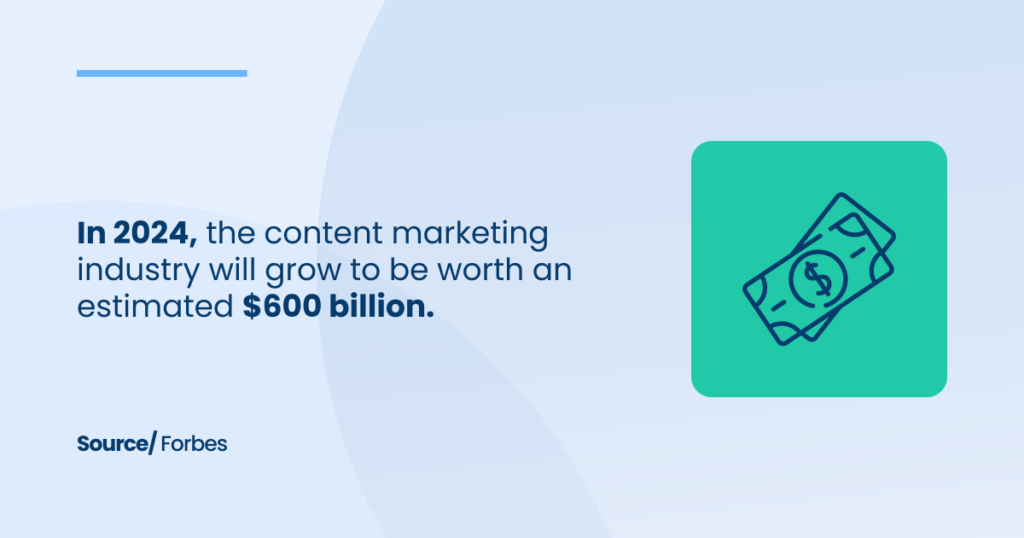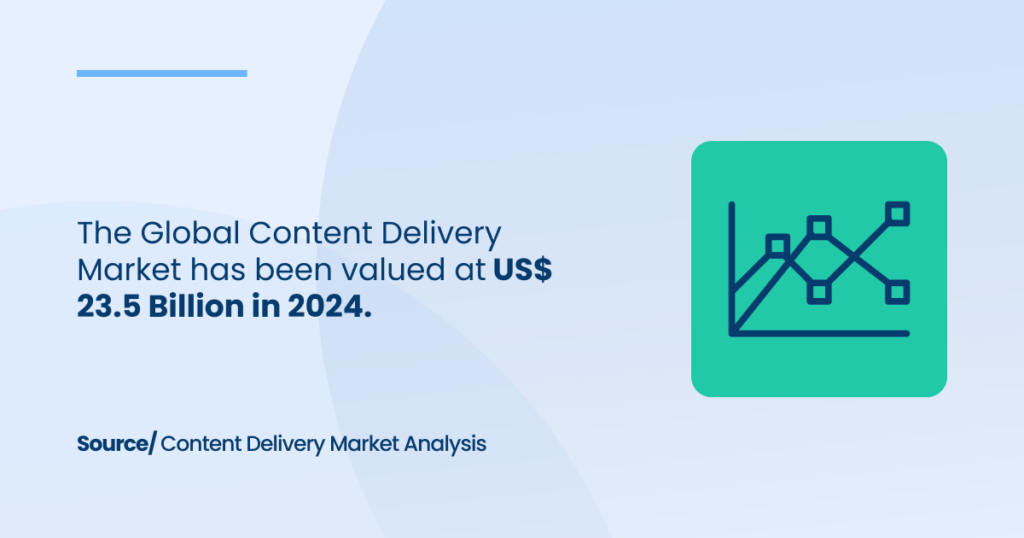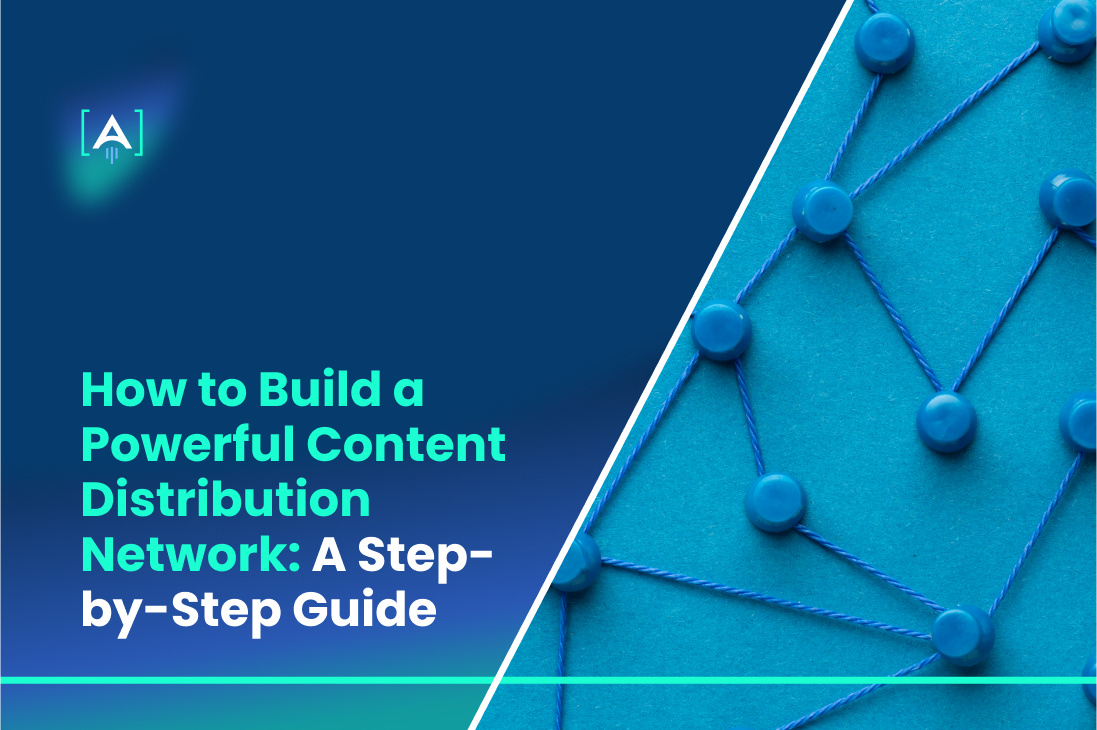Creating great content is just the first step.
To truly maximize its impact, you need to distribute it effectively.
A well-crafted content distribution network is essential for expanding your reach, driving traffic, and engaging your audience.
Andrew Davis, a bestselling author and keynote speaker, once noted, “Content builds relationships. Relationships are built on trust. Trust drives revenue.”
This statement underlines the cyclical nature of successful marketing strategies, where high-quality content serves as the foundation.
Accordingly, HubSpot highlights that content marketing strategy is the essence of a good piece.

Businesses across various industries recognize the importance of content marketing in engaging audiences, enhancing brand visibility, and boosting sales.
This understanding has led to increased investments in content marketing strategies and tools.
An expert Content Marketing Agency can play a pivotal role in this evolution, offering expert strategies and tools that cater to these needs.
The blog post will explore the key strategies and tactics for building a powerful content distribution network.
What is a Content Distribution Network?
In digital marketing, a content distribution network (CDN) refers to a system of interconnected channels and platforms used to disseminate and promote content across a wide audience.

This network leverages various distribution channels, including social media platforms, blogs, email, and more, to ensure that content reaches the right people at the right time, optimizing visibility and engagement.
Global demand for CDN services is estimated to accelerate at 11.8% CAGR and reach a market valuation of US$ 71.1 billion by the end of 2034.
By integrating content marketing automation into the network, businesses can streamline their content marketing workflow, making the distribution process more efficient and effective.
Benefits of a Content Distribution Network
Expanded Reach
Expanded reach is one of the primary benefits of a robust Content Distribution Network.
Businesses can tap into different demographics and geographies by utilizing diverse content distribution channels, from traditional blogs and websites to dynamic social media platforms.
Source: Grand View Research
This broadened reach is essential for brands looking to penetrate new markets or reinforce their presence in existing ones.
Implementing a strategic content distribution strategy ensures that content is seen by a larger audience and more of the right audience, which is crucial for effective marketing.
Increased Engagement
With a well-structured Content Distribution Network, companies can see a significant increase in engagement.
This network facilitates multiple touchpoints for audience interaction, from comments and shares on social media to replies in email campaigns, increasing the opportunities for audiences to engage with the content.
Improved SEO Performance
Integrating a Content Distribution Network with a Content Delivery Network can also enhance your SEO performance.
57% of B2B marketers claim that SEO is the most effective digital marketing initiative.
Source: SemRush
By distributing content across various authoritative platforms, businesses can generate high-quality backlinks to their main website, which are invaluable for SEO.
Moreover, increased sharing and visibility can increase organic traffic, boosting SEO rankings.
Utilizing effective content distribution strategies also means that content is more likely to be indexed quickly and ranked favorably by search engines, enhancing visibility in relevant search engine results.
Setting Clear Objectives
Creating an effective content distribution strategy begins with clear, well-defined objectives.
These goals will guide your decision-making, from selecting the right platforms to measuring success.
Define Your Target Audience
To effectively distribute content, you first need to understand who you are trying to reach. Your target audience is the group of people most likely to benefit from and engage with your content.
Identifying these individuals involves analyzing demographic data, interests, behaviors, and preferences.
Utilizing tools like Google Analytics can provide insights into the behavior of your website visitors, helping to refine your understanding of your audience further. This information will direct the type of content you create and the channels you use for distribution.
Identify Key Performance Indicators (KPIs)
Key Performance Indicators (KPIs) are vital metrics used to measure the effectiveness of your content distribution strategy. Choosing the right KPIs depends on the initial objectives set for the campaign. Common KPIs for content distribution include web traffic, engagement rates, conversion rates, and social shares.
Leveraging Google Analytics and social media analytics will help monitor these KPIs, providing data-driven content marketing information on how well your content performs across different channels.
This data is crucial for understanding what adjustments need to be made to optimize the strategy and achieve your goals.
Choosing the Right Platforms
The platforms you choose for distributing your content can greatly affect its reach and effectiveness. Selecting channels that best align with where your target audience spends their time and interacts with content is essential.
Source: Data Reportal
Matching Platforms with Content Types
Different types of content often perform better on specific platforms due to the varying nature of audience engagement across channels. For instance:
- Long-form articles and blogs may gain more traction on LinkedIn or through direct email newsletters where a more engaged, professional audience is looking for detailed insights.
- Videos might perform best on YouTube or Facebook, facilitating easy sharing and having large user bases that consume video content voraciously.
- Infographics and short visual posts could see higher engagement on Instagram or Pinterest, which are highly visual platforms.
The key is to match each platform’s strengths with the type of content you are distributing. This strategic alignment ensures that each piece of content has the greatest chance of performing well, maximizing exposure and engagement with your target audience.
Your content distribution network can dramatically enhance your digital marketing efforts by setting clear objectives, defining your target audience, identifying appropriate KPIs, and carefully selecting and aligning content with the most effective platforms.
These strategies enable you to reach broader audiences more effectively, engage users deeply, and ultimately drive the conversions that matter most to your business.
Creating Engaging Content
To maximize the impact of a content distribution network, it’s crucial to create content that attracts attention and deeply resonates with the audience.
“Content is King, but engagement is Queen, and the lady rules the house!” says Mari Smith.
Engaging content can dramatically improve the effectiveness of your distribution efforts, making it more likely that your messages spread widely and convert effectively.
Content that Resonates
Understanding Audience Needs
Before crafting any content, it’s imperative to deeply understand your target audience’s needs, preferences, and challenges.
This ensures that your content is relevant and valuable to those who consume it.
- Conduct Surveys and Interviews: Regularly gather feedback directly from your audience to better understand their interests and pain points.
- Use Social Media Monitoring Tools: Tools like Hootsuite or BuzzSumo can help you track what topics are trending among your audience and what kinds of posts generate the most engagement.
- Analyze Engagement Data: Use analytics from your content delivery networks and platforms to see which content types resonate the most and why.
Crafting Compelling Messages
Once you understand your audience’s needs, the next step is to craft messages that catch their attention and motivate them to take action.
- Focus on Benefits, Not Features: Emphasize how your content can solve problems or improve the audience’s life rather than just describing what it is.
- Create Emotionally Appealing Content: Use storytelling to connect emotionally, making your content more memorable and impactful.
- Use Clear and Concise Language: Avoid jargon and complex language to ensure a broad audience easily understands your message.
Content Varieties for Distribution
Different types of content can engage your audience at various points in their journey.
The choice of content type should align with both the distribution platform and your target audience’s preferences.
Source: SemRush
Blogs and Articles
- Deep Dive and How-to Guides: Offer in-depth exploration of topics relevant to your audience, establishing your brand as a thought leader.
- Listicles and Tips: Provide actionable advice in an easy-to-digest format that readers can quickly implement.
- Success Stories and Case Studies: Share real-life examples of how your product or service has helped others, enhancing credibility and trust.
Videos and Podcasts
Source: Loopex
- Explainer Videos: Break down complex topics into simple explanations that are easy to understand and share.
- Interviews with Industry Experts: Offer valuable insights and perspectives that can elevate your brand’s authority.
- Behind-the-Scenes Looks: Give audiences a peek into your company culture and processes, building a personal connection.
Infographics and E-books
- Infographics: Use visually appealing graphics to summarize important data or concepts, making them ideal for quick consumption and high shareability on social media channels.
- E-books: Provide comprehensive coverage on specific topics, offering value through detailed content that can attract leads when offered as a download in exchange for contact information.
By utilizing a diverse mix of content types and tailoring each piece to meet the specific needs and preferences of your audience, you can maximize the effectiveness of your content distribution network.
Each type of content plays a unique role in your overall content strategy, helping to attract, engage, and convert audiences through tailored impactful messages.
Whether distributed through social media channels, content delivery networks, or a press release distribution network, well-crafted content can drive significant results in your marketing efforts.
Paid Advertising Strategies
To enhance the effectiveness of a content distribution network, incorporating paid advertising strategies can significantly extend the reach and impact of your content.
These strategies help target specific demographics and boost visibility beyond organic methods.
PPC and Display Ads
PPC (Pay-Per-Click) and display advertising are powerful tools for driving targeted traffic to your content.
PPC ads, usually served through search engines, allow marketers to bid on keywords relevant to their target audience, ensuring that their ads appear in the search engine results when these keywords are queried.
Display ads, on the other hand, are visual advertisements that appear on various websites across the internet that are part of a display network.
- Targeting and Retargeting: Platforms like Google Ads provide sophisticated targeting options that allow you to reach users who have shown interest in similar content or who have previously interacted with your brand.
Retargeting helps keep your brand at the forefront of potential customers’ minds, increasing the likelihood of conversion.
- Optimization Through Analytics: Utilizing data from these campaigns is crucial for optimizing performance.
Content distribution KPIs such as click-through rates (CTRs), conversion rates, and cost per acquisition (CPA) should be continuously monitored using tools like Google Analytics to ensure the maximum ROI on your ad spend.
Partnership and Collaborations
Building strategic partnerships and collaborations can greatly enhance the reach and credibility of your content within your content distribution network.
Through partnerships, brands can leverage each other’s strengths and engage with a broader audience.
Influencer Partnerships
Influencer partnerships involve collaborating with individuals who have significant followings on social media platforms and can influence the behavior of their audiences.

These partnerships can be tailored to fit your content strategy and distribution goals.
- Enhanced Reach and Authenticity: Influencers can introduce your brand to their followers in a personal and authentic way. Their trust and rapport with their audience are invaluable, making their endorsements potentially more effective than traditional advertising.
- Strategic Alignment: Partnering with influencers whose brand values and audience demographics align closely with yours is important. This alignment ensures that the content they share will resonate with their followers and be seen as relevant and engaging.
Partner with [A] Growth Agency for Your Powerful Content Distribution Strategy
A well-executed content distribution strategy is the essence of maximizing your content’s impact.
Remember, Consistency is key. To truly benefit from a robust content distribution network, it’s crucial to maintain a steady flow of quality content across various channels.
[A] Growth Agency will help you in this process.
We will provide the tools and strategies necessary to reach, engage, and convert your target audience more effectively.
Our experience in handling diverse content distribution networks and their understanding of ever-evolving digital marketing landscapes will ensure that your content is positioned to succeed.
Growth isn’t just what we offer. It’s who we are.
Go ahead!

